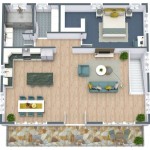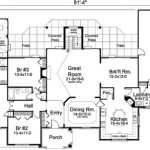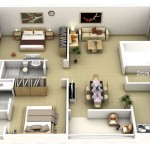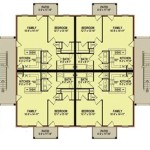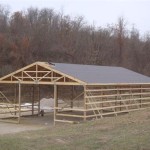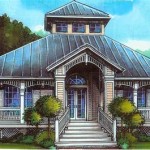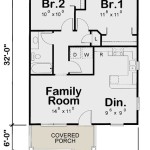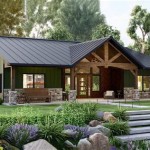House Plans For Sloped Lots In The Front
Building a home on a sloped lot presents unique challenges and opportunities. While the sloping terrain can create dramatic views and enhance privacy, it also requires careful consideration in designing the house plan. For lots with a slope primarily in the front, innovative design solutions are crucial to maximize the usable space and create a visually appealing home.
By embracing the slope rather than trying to fight it, homeowners can create a home that blends seamlessly with the natural landscape. This article will explore key design considerations for house plans on sloped lots in the front, providing insights into maximizing space, integrating the landscape, and achieving a harmonious architectural balance.
Maximizing Usable Space
One of the primary challenges of building on a sloped lot is maximizing usable space. The sloping terrain can lead to uneven floor levels and awkward layouts if not addressed thoughtfully. Here are some strategies to maximize usable space:
- Split-Level Design: Split-level homes are ideal for sloped lots, as they allow for different levels to be adapted to the terrain. This design typically features a main level with a living room, kitchen, and dining area, while bedrooms and bathrooms are located on lower or upper levels, maximizing the usable space within the lot.
- Walkout Basements: A walkout basement can significantly enhance space utilization. This type of basement has exterior access, offering the potential for additional living space, recreation rooms, or even guest suites. The walkout feature allows for natural light and ventilation, making the basement more appealing and functional.
- Terraced Levels: Integrating terraced levels into the design can create a series of interconnected living areas that follow the natural slope. This approach offers flexibility in layout and can create visually appealing and functional spaces, especially when incorporating outdoor terraces and retaining walls.
Integrating the Landscape
A well-designed house plan on a sloped lot should seamlessly integrate the surrounding landscape. This can be achieved by:
- Utilizing the Slope for Outdoor Living: The slope can be incorporated into the design by creating cascading decks, patios, and landscaping features. This allows for multi-level outdoor living areas, maximizing the outdoor space and creating distinct zones for entertaining, relaxation, and gardening.
- Incorporating Retaining Walls: Retaining walls are essential for stabilizing the slope and creating defined outdoor spaces. They can be used to support terraces, gardens, and pathways, while also enhancing the aesthetic appeal of the landscape. Materials like stone, concrete, or wood can be chosen to complement the overall design of the house and the surroundings.
- Preserving Natural Features: When possible, preserving existing trees and natural features can enhance the character of the property and create a sense of continuity with the surrounding environment. By incorporating these elements into the design, the home can blend harmoniously with the landscape and create a more visually appealing and sustainable environment.
Achieving Architectural Balance
A successful house plan for a sloped lot should achieve a balance between function and aesthetics. Achieving this balance requires careful consideration of:
- Roofline Design: The roofline plays a significant role in the overall visual appeal and functionality of the house. For sloped lots, a steeply pitched roof can help manage rainwater runoff and provide a sense of stability. However, the roofline should be designed to complement the overall architectural style and enhance the home's visual appeal.
- Window Placement: Careful window placement is crucial for maximizing natural light and framing scenic views. Large windows on the upper levels can capture expansive vistas, while smaller windows on lower levels can offer privacy and direct light to specific areas. Window design should consider the surrounding landscape and the desired level of privacy.
- Symmetry and Asymmetry: Balancing symmetry and asymmetry in the facade can create a visually appealing and harmonious design. Symmetrical elements can provide stability and balance, while asymmetrical features can add visual interest and break up the monotony of the facade. The designer should carefully consider the overall scale and proportions of the house and the surrounding landscape to achieve a balanced and aesthetically pleasing design.
Designing a house plan for a sloped lot requires thoughtful planning and a deep understanding of the site's unique challenges and opportunities. By maximizing usable space, integrating the landscape, and achieving architectural balance, homeowners can create a home that is both functional and visually appealing, showcasing the beauty of the sloping terrain while providing a comfortable and enjoyable living environment.

House Plans For A Sloped Lot Dfd Blog

Plan 51696 Traditional Hillside Home With 1736 Sq Ft 3 Be

Modern House Plan Sloping Lot Contemporary Style 5590 Vista

034h 0300 Mountain House Plan Designed For A Front Sloping Lot Plans Craftsman Style

Sloping Lot Contemporary Style House Plan 1100 Sundown

Plan 80816pm Modern Getaway For A Front Sloping Lot House Plans Garage Style

The Best House Plans For Sloped Lots And Narrow Houseplans Blog Com

Best Simple Sloped Lot House Plans And Hillside Cottage

210 Home Plans For The Sloping Lot Ideas In 2024 House How To Plan

For The Front Sloping Lot 8131lb Architectural Designs House Plans

